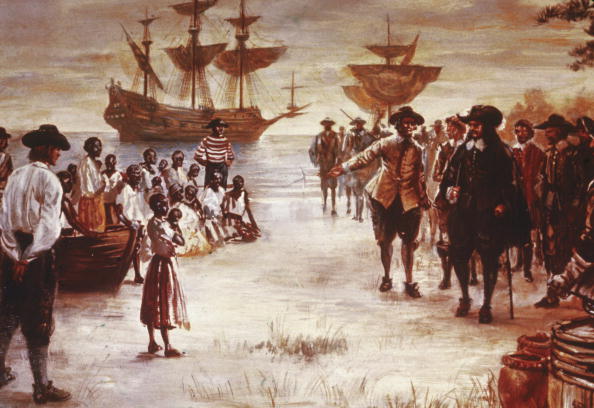February 1 marks the start of Black History Month—a chance to recognize Black men and women who have made significant advancements across the United States and worldwide in sports, entertainment, science, politics and many other fields.
According to History.com, Black History Month originated in 1915, nearly 50 years after the 13th Amendment, which prohibiting slavery in the United States, was ratified in the Constitution. Revered historian Carter G. Woodson first dubbed it as "Negro History Week." However, it wasn't until 1976 that the U.S. president officially recognized the entire month of February as Black History Month. Thanks to technological improvements, it's now easier than ever to rediscover one's family lineage or identify where some of the first African immigrants settled stateside. Several museums and history centers across the country are also commemorating the month with signature events of their own, and one institution plans on celebrating Black accomplishments in February and onward.
The Jamestown Settlement and American Revolution Museum at Yorktown (JSARM at Yorktown) is a history-focused interactive museum located in Williamsburg, Virginia. Loaded with artifacts hundreds of years old, the JSARM at Yorktown aims to remember some of the earliest settlers, who arrived to the Commonwealth of Virginia in the 17th and 18th centuries.
For Black History Month, officials at the JSARM have gone above and beyond in order to memorialize Black figures in Virginia's history. During the month, they are also observing a pivotal moment in Black history: 400 years since the arrival of Africans in Jamestown, Virginia. Blavity had a chance to speak directly with individuals from the foundation, and they provided us with much more insight on how their February displays will reflect this milestone.
One of their first objectives include celebrating women with an exhibit titled "TENACITY: Women in Jamestown and Early Virginia," which will feature personal anecdotes from African and Powhatan Indian women. This exhibit runs for the entire year and into next year, with a current end date set for January 5, 2020.
The JSARM will also present "After Angelo: Celebrating Black Women in America," a special event later in the month on February 23. They plan to honor the legacy of Angelo, the first African woman mentioned by name in historical records at Jamestown.
According to Nancy Egloff, a historian at the JSARM, Angelo was given her name when Portuguese inhabitants baptized her in Angola, before transferring her to the ship. She is originally from Ndongo, the kingdom from which she originated in the Portuguese territory of Angola, which is located in West Central Africa. Portuguese colonists felt they were called to convert and baptize Africans before enslaving them and shipping them to their future homes. Angelo arrived to Virginia in 1619 from Angola. Unfortunately, there are so few details surrounding Angelo's life in America, except for a cameo in the recording, "Muster of the Inhabitants of Virginia," which was published in 1625, which is available for listening at the JSARM. After that, Angelo's story is virtually untraceable.
To really understand the plight these eventual settlers made from Africa to the United States, Dr. John Thornton and Dr. Linda Heywood, along with former JSARM senior curator Dr. Thomas Davidson, ventured to present-day Angola, and completely immersed themselves in the culture, taking photos along the way.
As part of the event, keynote speaker Dr. Cassandra Newby-Alexander, who serves as the Dean of the College of Liberal Arts and Professor of History at nearby HBCU, Norfolk State University will deliver a lecture centered on developing a Black community. The lecture will be followed by a moderated panel discussion from 12pm to1pm. Titled "Re-interpreting History through the Lives and Eyes of Black Women," panelists will discuss how examining key moments in Black history is better understood when explained by African-American women. The day will also include live music, dramatic performance and historical presentations from 9am to 5pm, followed by a jazz and blues concert from 6pm to 10pm.
Egloff told Blavity that Africans in Virginia came in August 1619, arriving on the English privateering ship White Lion. The Portuguese supplied African slaves to the Spanish colonies in the Americas. The White Lion and a few days later the privateering ship Treasurer, also transporting some of the 50 or so Africans they captured, ultimately docking at Point Comfort, or modern-day Hampton, Virginia. Upon arriving, some of these first Africans were traded to Governor George Yeardley and the cape merchant Abraham Piersey, for supplies. While 20 to 30 of these Africans were left in Virginia, the remainder traveled to Bermuda.
If you're unable to travel to JSARM this February to learn about Angelo, the institution has other expositions available for viewing until March 2020. The “Forgotten Soldier” exhibit profiles the narratives of both enslaved and free Black individuals, who fought on both sides of the American Revolution, and their endeavors in constituting the United States. Soldiers who enlisted for the Americans did so because they too believed in a free and sovereign country. Slaves who preferred to serve on the British side were coerced with the promise of their own liberation.
African Americans in the United States don't need a reminder of how important understanding our societal beginnings are to our modern-day accomplishments. While just a small part of a greater push to highlight some of the hidden figures from centuries past, the Jamestown Settlement and American Revolution Museum at Yorktown,Virginia are doing their part to initiate the conversation of tracing our past and linking it to the present.
Blavitize your inbox! Join our daily newsletter for fresh stories and breaking news.
Now, check these out:
7 Great reads to celebrate Black History Month
15 Moments of Black History That Have Occurred Since The Last Black History Month
